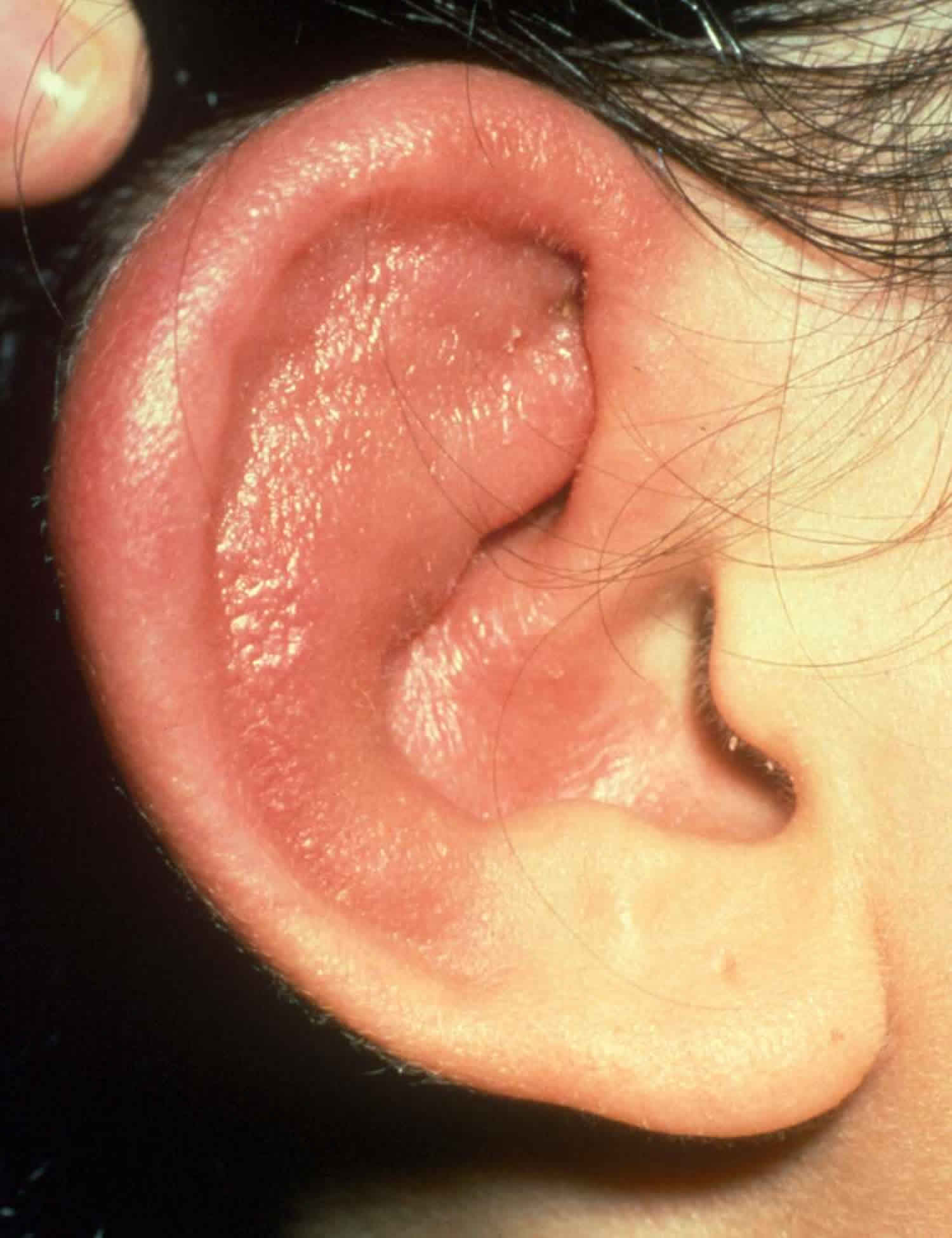Perichondritis
Perichondritis is an infection of the skin and tissue surrounding the cartilage of the outer ear (pinna). Cartilage is the stiff but flexible material that gives your ear its shape. All cartilage has a thin layer of tissue around it called the perichondrium. This covering helps provide nutrients to the cartilage.
Injuries, burns, insect bites, ear piercings through the cartilage, ear surgery, or a boil on the ear may cause perichondritis. The infection also tends to occur in people who have inflammatory disorders, such as granulomatosis with polyangiitis (formerly known as Wegener granulomatosis), whose immune system is weakened, or who have diabetes.
The first symptoms of perichondritis are redness, pain, and swelling of the auricle. The person may have a fever. Pus accumulates between the cartilage and the layer of connective tissue around it (perichondrium). Sometimes the pus cuts off the blood supply to the cartilage, destroying it and leading eventually to a deformed ear (called cauliflower ear). Perichondritis can be destructive, recur, and last a long time. Doctors will give you antibiotics and, if needed, make a small cut to let any pus out of your ear.
Perichondritis causes
The most common type of bacteria that causes perichondritis infection is Pseudomonas aeruginosa.
Perichondritis is usually caused by an injury to the ear due to:
- Ear surgery
- Ear piercing (especially piercing of the cartilage)
- Contact sports
- Burns
- Bite
- Trauma to the side of the head
If you have diabetes or a weak immune system you’re more likely to get perichondritis
Ear piercing through the cartilage is probably the major risk factor today. Surgery, burns, and acupuncture also increase the risk of infection.
Perichondritis can lead to chondritis, which is an infection of the cartilage itself. This can cause severe damage to the ear structure.
Perichondritis prevention
Avoid piercing your ear through the cartilage. Piercing the ear lobe is a better option. The popularity of cartilage piercing has led to a significant increase in the number of perichondritis and chondritis infections.
Perichondritis symptoms
A painful, swollen, red ear is the most common symptom of perichondritis. At first, the infection will look like a skin infection, but it quickly worsens and involves the perichondrium. The redness usually surrounds an area of injury, such as a cut or scrape. There may also be fever. In more severe cases, fluid will drain from the wound.
Pus may build up under the skin of your ear
Perichondritis complications
If the infection spreads to the ear cartilage, part of the ear may die and need to be surgically removed. If this occurs, plastic surgery may be needed to restore the ear to its normal shape.
Perichondritis treatment
Doctors treat perichondritis with antibiotics (such as a fluoroquinolone, for example, ciprofloxacin) either by mouth or directly into the bloodstream through an intravenous (IV) line and often a corticosteroid by mouth. The choice of antibiotic depends on how severe the infection is and which bacteria are causing the perichondritis. Antibiotics can be given for 10 days to several weeks.
If there is an abscess (collection of pus), you may need surgery to drain the pus. The surgery is done to drain this fluid and remove any dead skin and cartilage, allowing blood to reach the cartilage again, and leave a small drain in place for 24 to 72 hours. Antibiotics are given by mouth. Warm compresses may also help. Doctors may stitch (suture) the perichondrium to the cartilage to ensure that it heals correctly to avoid a deformity of the auricle. Pain relievers are also given.
Doctors also remove any foreign objects, such as an earring or a splinter.
Perichondritis prognosis
How well a person does depends on how quickly the infection is diagnosed and treated. If antibiotics are taken early, full recovery is expected. If the infection involves the ear cartilage, more involved treatment is needed.





